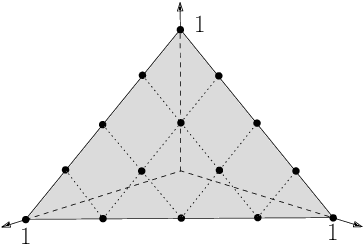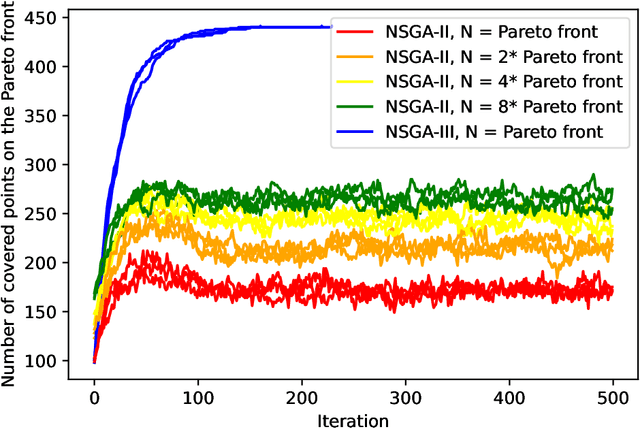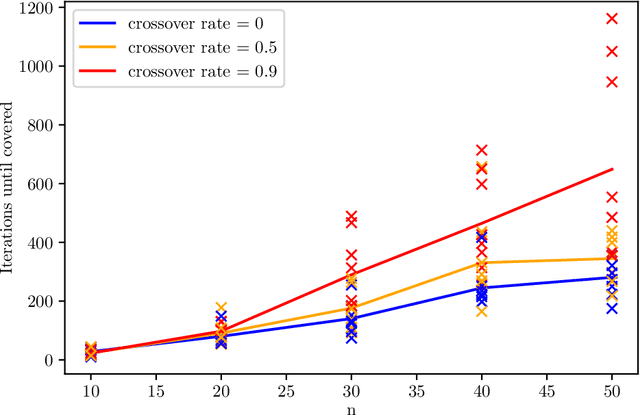A Mathematical Runtime Analysis of the Non-dominated Sorting Genetic Algorithm III
Paper and Code
Nov 15, 2022


The NSGA-II (Non-dominated Sorting Genetic Algorithm) is the most prominent multi-objective evolutionary algorithm for real-world applications. While it performs evidently well on bi-objective benchmarks, empirical studies suggest that its performance worsens when applied to functions with more than two objectives. As a remedy, the NSGA-III with a slightly adapted selection for the next generation was proposed. In this work, we provide the first mathematical runtime analysis of the NSGA-III, on a 3-objective variant of the \textsc{OneMinMax} benchmark. We prove that employing sufficiently many (at least $\frac{2n^2}{3}+\frac{5n}{\sqrt{3}}+3$) reference points ensures that once a solution for a certain trade-off between the objectives is found, the population contains such a solution in all future iterations. Building on this observation, we show that the expected number of iterations until the population covers the Pareto front is in $O(n^3)$. This result holds for all population sizes that are at least the size of the Pareto front.
 Add to Chrome
Add to Chrome Add to Firefox
Add to Firefox Add to Edge
Add to Edge